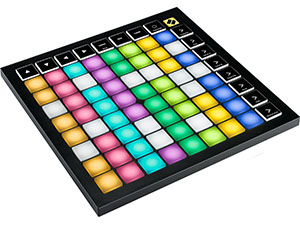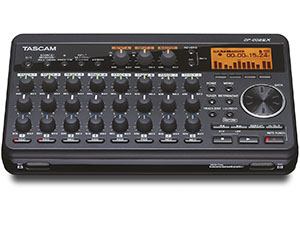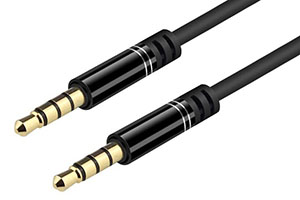Items marked with ‘*’ are for studio use only.
1. Digital Keyboards

Yamaha Clavinova Digital Piano* (with MIDI capability)

Korg MicroX synthesizer (with MIDI capability)*
2. MIDI Controllers

Novation Launchpad X: MIDI Controller for Ableton Live

M-Audio Keystation 49: Basic MIDI Keyboard
3. Audio recorders

Sony PCM M10 Digital Audio Recorder. This is useful for live audio recording of music performances. It also has a line-in port (so you can record directly from something like a headphone output) and a mic input. It records in stereo and the sound quality is quite good.

Sanyo ICR-H800 Digital Audio Recorder (4 available). This is similar to the above device, but it more suitable for recording speech. These can be borrowed directly from the English Corner.
4. Portable mixer

Tascam Pocketstudio DP-008 portable 8-track digital audio recorder. This is a more complex device. You can use it to record 8 different tracks and then mix the tracks together. You can record two tracks at a time using XLR mic inputs and/or 1/4 inch line inputs. You can export the tracks individually as different audio files and you can also export the whole mix as an audio file. This device can also supply phantom power to the microphones.
5. Audio recording kit (for borrowing)

Focusrite Scarlett 2i2 Studio: Includes digital audio interface, microphone, XLR cable and headphones.
6. Digital audio interfaces
These are used to connect microphones and instruments to a computer. They can also provide phantom power for the condenser microphones.

Steinberg UR242*. This has two inputs (XLR or 1/4 inch)

Scarlett Focusrite 2i2*. This has two inputs (XLR or 1/4 inch)

Allesis Multimix 8 USB mixer. Usually, I just record one or two instruments at a time. However, we also have this mixer. It has four XLR mic inputs and four 1/4 inch line inputs. This can be used to record several different instruments at once.
7. Microphones
The larger condenser mics require phantom power. Normally, this comes from the digital-audio interface, so we usually just use this kind of mic in the studio. We do have a portable phantom power device, though. Dynamic mics don’t require power, while the smaller condenser mics get their power from AA or AAA batteries.

Rode NT2 condenser mic with shock mount and pop filter. The mic needs phantom power and an XLR connection. The polarity is switchable—cardioid, figure 8 and omni-directional.

AKG C 4000 B condenser mic with shock mount and foam windscreen. The mic needs phantom power and an XLR connection. The polarity is switchable—cardioid, hyper-cardioid and omni-directional.

Shure SM 57 dynamic mic. Cardioid polarity. XLR connection. (2 available).

AKG D5S dynamic vocal mic. Hypercardioid polarity. XLR connection.

Behringer C-2 Condenser mics (STR). These mics come in a pair and would be used for recording in stereo The mics require phantom power and an XLR connection. The polarity is cardioid.

Icon O2 condenser mic with shock mount and pop filter. Cardioid polarity; XLR connection.

Icon O3 condenser mic. This is similar to the above model but the polarity is switchable—cardioid, figure 8 and omni-directional.

Baomic lavalier mic set. We have two of these. Each set has two wired mics, two cables, two transmitters, one large receiver. Thus, with two sets it is possible to give four people their own mics. However, the process is very unwieldy. First, the receiver is very large. Second, if you were to use all four mics with a camcorder, you would end up having to check 16 different audio signal levels before the signal actually reached the camcorder
8. Camcorder Mics
These are also listed in the video equipment section, but most of them can also be used for audio recording only (using an audio recorder or digital-audio interface).

Boya BY-WM4 Pro-K2 Dual-Channel Wireless Microphone: This set would be used if you want to video-record a conversation between two people. Your camera needs a mic input. Each of the three devices (two mics and one receiver) requires two AAA batteries.

Boya BY-WMS Pro Wireless Microphone: This is a wireless clip on mic set. Each of the devices requires two AAA batteries. The camera needs a mic input.

Sony ECM W1M Wireless Microphone: This must be used with a compatible Sony camcorder as the receiver fits in the hot shoe of the camcorder. It can be used with any of our camcorders. The microphone requires an AAA battery.

Sony ECM-GZ1M Gunzoom Microphone (2 available): This must be used with a compatible Sony Camcorder as the mic fits into the hot shoe of the camcorder. It is very convenient as it does not require batteries.

Azden WLX-Pro VHF Wireless Lapel Microphone System. The devices each require a 9-volt battery. The camera needs a mic input.

Sony ECM-AW3 Wireless Bluetooth Microphone. Your camera needs a mic input. Each device (mic and receiver) requires and AAA battery.

HTDZ Super Uni-Directional Electret Condenser Microphone (2 available). This is not a wireless mic. There are various ways to connect it to the camcorder or audio recording device, so you will also need to borrow a cable and converter. We also have a mic boom available (as this mic is often used by holding it above the people being recorded and pointing it downward. The mic requires an AA battery.
9. Other Audio Equipment

Beachtek DXA-2T Adaptor. This device is used to connect mics using XLR connections to a camera or camcorder. It can also be used to convert a line signal (e.g., from a mixer or headphone output) into a mic input signal. No power supply is required.

Azden FMX-DSLT portable mixer. This is used to combine two different mic inputs into a one mic input. There are two XLR inputs and two 3.5 mm inputs. It requires 4 AA batteries.

Samson S-mix 4-channel channel amp and mixer (for using multiple sets of headphones at the same time)

Samson S-phantom 48v phantom power supply (for using condenser mics outside of the studio)

3 mic stands and various accessories (e.g., pop filter, shock mounts, mic holders of different sizes, etc).
10. Cables

XLR Microphone cables (3 m, 5 m)

1/4 inch TS music instrument cable (2 m, 5 m)

MIDI cable (1 m, 5 m)

XLR (female) to 1/4 inch TS (5 m)

1/4 inch to 3.5 mm cable (1 m)

XLR (female) to 3.5 mm audio (1.7 m)

3.5 mm TRS audio cable (0.15 m, 0.5 m, 1 m, 1.8 m, 2.5 m, 3 m, 10 m): stereo

3.5 mm TRS audio cable: male/female (0.15 m, 2 m, 5 m)

3.5 mm TRRs cable ( 2 m): stereo + one more channel for microphone

3.5 mm TRRS audio cable extension (1 m)

3.5mm TRS audio to Type C (1 m, 2 m): for non-iOS laptops, notebooks and smartphones

Type C to 3.5 mm TRS audio: for non-iOS laptops, notebooks and smartphones

Headphone (3.5 mm TRS) male to 2-female splitter

3.5 mm TRS audio to RCA cable (1 m)

3.5 mm TRS audio to RCA

3.5 mm TRS audio to RCA

RCA audio cable (1 m)

RCA to four-pole AUX plug (1 m)
11. Software
- Multi-track recording and editing Sonar X1 Studio, Sonar Home Studio*
- Basic recording and editing: Goldwave*
- Noise reduction, compression and mastering: Magix Audio Cleaning Lab*

